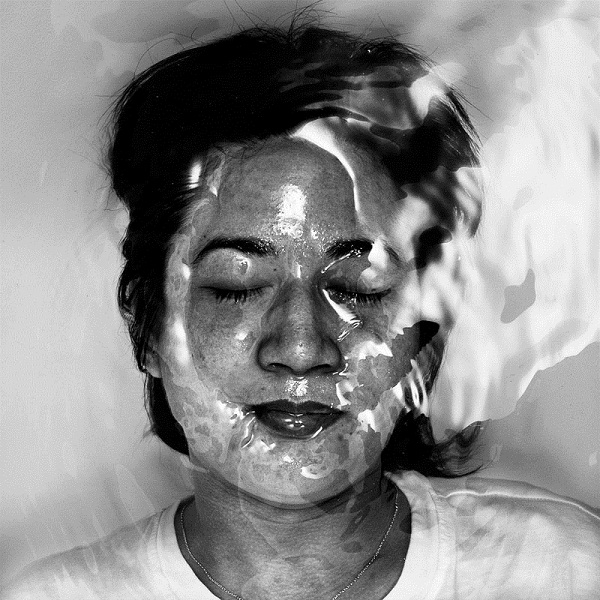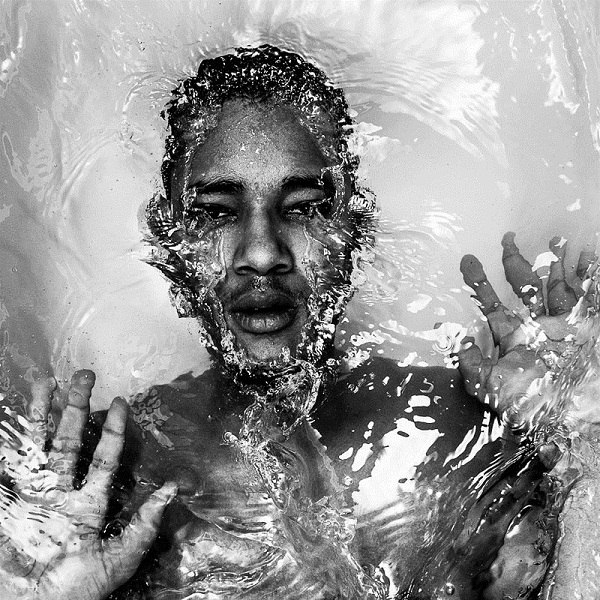Artist of the Week 10/3-10/9: Alban Grosdidier Drowns And Resuscitates Emotions In His Work
To many, Alban Grosdidier, 22, may seem like the typical college student — a determined goal of getting through school, despite a few setbacks, with a couple of stamps on his passport to match. Archetypally for students entering their last year of university, a portfolio of their work is often required to show growth in their particular field before they traverse into the “real world” and begin their journey into a lifelong career. However, the young French man has something better. He has works that could very well be attributed to veterans in the art world, not someone, as Grosdidier says, who was “attracted to art pretty late.”
The extent of his inward pull to art can be traced back to the dire age of 13, where he would draw on the corners of his notebooks. However, at that point in time, he wasn’t trying to become the next great French artist. “Even in art school, it took me some time to fight and work harder in order to become better,” he explains. And one could say that such relentless determination certainly helped the burgeoning artist come into his own. “Ever since I’ve started doing it, I am much more comfortable with the work I produce, and learn more every time because I simply think more about it,” he adds.
Despite not showcasing his work in exhibitions, one of the many pinnacle moments in an artist’s career, Grosdidier has had three street art projects thus far — two of them on scenic waterways, where he presented his Drowning collection in both January and July of this year. The series focuses in on the submerged feelings that coexist with people in the big city and the methods of dealing with them on a singular basis. Through photography, the work showcases individuals inundated under water as they express their fear, pain, and frustration, among an array of other emotions. For his third street art project, Grosdidier took a similiar eye-opening approach by plastering portraits of people on the sides of buildings. Here he chose to explore the ramifications of political campaigns in his socially charged installment, People Are Watching. This body of work attempts to remind public officials that they are elected to serve the people that vote for them.
From People Are Watching to Drowning, Grosdidier shows his multifaceted artistic range. He has the ability to magnify the emotions of people who’ve placed their trust in public officials as well as literally creating breathtaking images that erupt in a volcano of human fears and sensations. Not only is he able to flex his range conceptually, but he also does so with the mediums he uses to get his message across. He experiments with different types of artistic forms, but his primary choice is photography and graphic design and through this he has found a medium to excel at. When asked what he thinks the future holds for him despite having already accomplished so much in his short-term career, he modestly replied that “hopefully working on projects that I care about, whatever they would be.”
Exclusively for GALO, artist Alban Grosdidier talks living in Paris, Drowning, and following in the footsteps of famous artists.
GALO: Your Drowning collection shows a great deal of sentiment, yet with the exception of one photograph, the subjects seem to be frozen in a moment of serenity. What is this collection truly reflective of?
Alban Grosdidier: Actually, I think serenity is also a feeling, a sentiment. I wanted to show the diversity of these feelings people can have responding to a certain situation, their living in a big city. Some people will take it very well, some very bad, some in between, and some you [just] don’t know.

Alban Grosdidier’s “Drowning” series. Photo Credit: Alban Grosdidier.
GALO: On your Web site you share that Drowning is a project that reflects the feeling of submersion that you can have when living in a big city. Why the correlation?
AG: In French, we have this expression that says, “having your head underwater,” which would be translated by being under a lot of stress, a tremendous amount of work, or [working at] a highly-tensed pace. I think those situations can be described as direct consequences of city life. They’re not exclusive, obviously, but they still characterize it pretty well.
Take the subway for example. In the morning, you wake up, and roughly one hour later, you’re underground stuck to strangers in an overcrowded train making room for a beggar to pass along. You’d like to help him, but as you’ll probably meet around 10 of them, you think to yourself you can’t help them all and feel guilty about it. I don’t know anybody that wouldn’t be stressed by this. Personally, I handle it so badly that I don’t take the subway anymore.
Anyway, that’s why I decided to make this metaphoric series. The presence of water was a literal translation and the act of drowning was interesting because it goes through multiple phases as it goes along.

Alban Grosdidier’s “Drowning” series. Photo Credit: Alban Grosdidier.
GALO: Some artists escape to the countryside while others are inspired by muses. Where do you escape to or draw inspiration from?
AG: I guess anything I see can give me ideas. Sexuality, politics, social matters, beauty, ugliness, art history, some things that I see, some that I hear, and some techniques or conceptual processes will interest me and I’ll want to adapt it to another field or meaning. Anything that is not neutral has value, therefore, a lot of things have value and I get inspired by all that is under my radar.
I mean, [everybody] has opinions and ideas about all sorts of stuff. Mine concentrates on what is visually or conceptually interesting. But as explained on sites such as TED and the 99 percent, ideas are abundant and volatile; therefore, they don’t have much value. It’s the realization of a project that makes its value. I am sure not to be wrong if I say that you have already felt like you had a great idea in your brain, but you never put it into action, so it never led to a tangible result.
(Article continued on next page)











